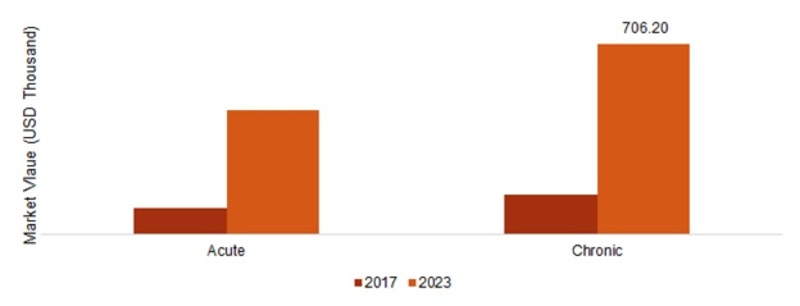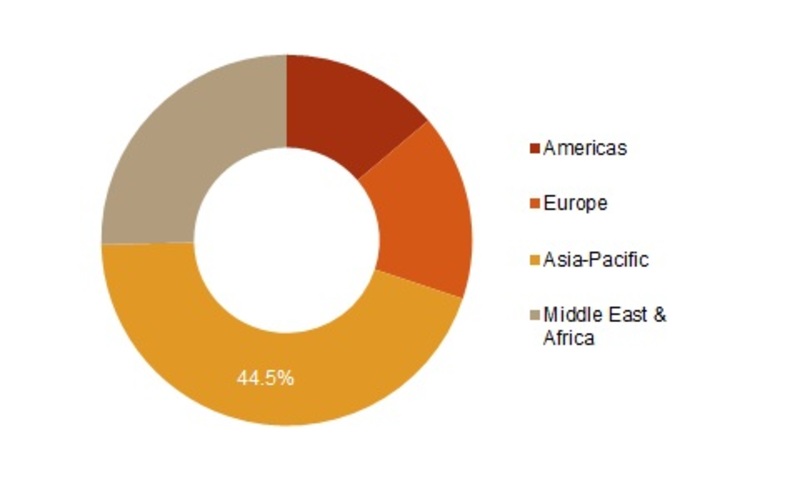Certified Global Research Member


Key Questions Answered
- Global Market Outlook
- In-depth analysis of global and regional trends
- Analyze and identify the major players in the market, their market share, key developments, etc.
- To understand the capability of the major players based on products offered, financials, and strategies.
- Identify disrupting products, companies, and trends.
- To identify opportunities in the market.
- Analyze the key challenges in the market.
- Analyze the regional penetration of players, products, and services in the market.
- Comparison of major players’ financial performance.
- Evaluate strategies adopted by major players.
- Recommendations
Why Choose Market Research Future?
- Vigorous research methodologies for specific market.
- Knowledge partners across the globe
- Large network of partner consultants.
- Ever-increasing/ Escalating data base with quarterly monitoring of various markets
- Trusted by fortune 500 companies/startups/ universities/organizations
- Large database of 5000+ markets reports.
- Effective and prompt pre- and post-sales support.
A plethora of elements determines the dynamics and growth path of Q Fever market. One such crucial determinant is the occurrence rate and incidence of Q Fever, an infectious disease that originates from Coxiella burnetii bacteria. Whenever regions register high numbers of reported cases, there is often an increase in demand for diagnostic tools, therapeutic interventions as well as preventive measures thus contributing to general expansion of the Q fever market.
The market landscape has also been shaped by government regulations as well as healthcare policies. The severity of Q fever outbreaks usually necessitates regulatory bodies to put in place strict guidelines on how to diagnose, treat and prevent the same. Adherence to these laws becomes very important especially for companies operating in the Q fever market because this affects their standards as well as product development initiatives.
Q Fever Market is significantly influenced by advancements in technology relating to diagnostic techniques and treatment modalities. Molecular diagnostics and serological testing innovations improve accuracy and efficiency in diagnosing Q Fever whereas imaging technologies do enhance information on diagnosis too (DePuydt et al., 2012). Additionally, ongoing researches on new therapies contribute towards changes in treatment options which impact market dynamics.
Another critical market factor is economic environment including health care spending levels and insurance coverage rates. Adoption rate is determined majorly by whether or not a particular diagnostic test or treatment option has economic viability (Ministry-of-Health-Alberta, 2018). This means that where there are strong accessible healthcare systems, advanced diagnostics instruments would be more demanding hence contributing towards increasing size of these markets.
Global travel patterns coupled with immigration affect the dynamics of Q fever market. As people cross borders increasingly so does the potential spread diseases like q fever disease.This requires development effective surveillance systems for quick detection tools plus international cooperation frameworks as a mitigation strategy against global q-fever threats.
Market factors include awareness campaigns about q fever amongst healthcare professionals and public education programs. Aware ness leads to early diagnosis, prompt intervention therapies and adopting preventive measures. Pharmaceutical companies and healthcare organizations come together in most cases in order to undertake education programs that guarantee q fever is diagnosed well as well as managed thus creating enabling environment for the market growth.
Environmental aspects such as climate and ecological change can also influence Q Fever occurrence. This bacterium is commonly associated with livestock, while environmental factors supporting the survival of its populations result into disease spread. Therefore it becomes very important to monitor these environmental factors so that effective strategies are made for management of Q fever.
Q Fever Market Highlights:
Q fever market Overview
The Q Fever market is anticipated to reach USD 4213.38 Million by 2030 at 4.60% CAGR during the forecast period 2022-2030. Some of the protuberant drivers supporting the growth of the Q fever market are identified as growth in the prevalence of chronic diseases and the increasing number of patients suffering from various bacterial infections.
The rising prevalence of Q fever coupled with increasing Q fever hospitalization rates, rising worldwide cattle, sheep, and goat population, growth in the risk factors of Q fever, and globally growing geriatric population are expected to drive the Q fever market in coming years.
Synopsis/Market Dynamics
Q fever is a bacterial infection caused by the bacteria Coxiella (C.) burnetii. C. burnetii has a reservoir in birds and mammals, especially cattle, sheep, and goats, and is most often an occupational disease affecting farmers, veterinarians, and slaughterhouse workers. The Q fever infection, mostly chronic Q fever is severe with complications including endocarditis, encephalitis, pneumonia, hepatitis, and splenomegaly requiring hospitalization. As per the data provided by the Centers for Disease Control and Prevention (CDC), between 2002 and 2014, the Q fever hospitalization rates were increased from 25.0% to 68.0%. In the US, the prevalence of Q fever was high in four states, namely, California, Texas, Colorado, and Illinois. Additionally, in 2014, the highest incidence rate of Q fever which was at least 1.0 case per million persons was found in Arizona, Arkansas, Colorado, Idaho, Montana, Nebraska, North Dakota, Oregon, South Dakota, Utah, and West Virginia. Moreover, according to the European Centre for Disease Prevention and Control (ECDC), in 2016, 1,102 cases of Q fever were reported in the European Union (EU)/European Economic Area (EEA), out of which 1,058 (96%) were confirmed.
Q fever Market Revenue, by Type, 2017 & 2023 (USD Mn)

Segmentation
Global Q fever, by type, segmented into acute and chronic. Chronic is the leading segment, which is growing at the highest CAGR to reach USD 706.20 thousand during the forecast period. Chronic Q fever is a life threating problem and causes damage to the heart, lungs, liver, brain, and could cause diabetes as well. The major share of the chronic segment is attributed to its high prevalence.
Based on diagnosis, Q fever market is segmented into serology tests and others. The serology tests account for major share with 8.32% CAGR during the forecast period. Under the serology test, Q fever is diagnosed through antibody blood tests, polymerase chain reaction (PCR) tests, immunoperoxidase staining, complement fixation, enzyme-linked immunosorbent assay (ELISA) tests, and other molecular tests.
The Q fever market, by treatment, is segmented into antibiotic and surgery. The antibiotics segment accounts for the second largest share in the market with 7.32% CAGR during the forecast period. Surgery is an important component of treatment if patients have extensive valvular damage or indications of heart failure.
On the basis of end user, the market is segmented into patients, hospitals and clinics, and others. The patient segment accounted for a considerable market share of 72.1% as of 2017.
Global Q fever Market Share, by Region, 2017 (%)

Regional Analysis
The Asia-Pacific accounted for the largest market share of 44.5% as of 2017 and is projected to grow at the highest CAGR of 8.57% during the forecast period. The increasing prevalence of chronic diseases such as diabetes, cancer, and bacterial infection in developing countries is the major driver for market growth. According to the International Diabetic Federation, about 415 million people had diabetes across the globe in 2015, which is expected to reach 642 million by 2040. It also stated that 98.4 million and 65.1 million diabetic population lived in China and India, respectively.
The Asia-Pacific is followed by Europe, which accounted for a major market share. The European market is expected to grow at a strong growth rate during the forecast period owing to the availability of advanced treatment facilities and healthcare expenditure along with growing pet adoption.
The Americas accounted for a significant share in the Q fever market. It is attributed to the increasing adoption of pets, increasing preventive treatments, and care facilities for companion animals, rising technically advanced devices, and growing awareness regarding animal-transmitted diseases.
Key Players
- In September 2017, Basilea Pharmaceutica Ltd entered into a development, manufacturing, and commercialization agreement with Gosun Pharmaceutical Co. Ltd. to develop, manufacture, and commercialize Basilea's antibiotic ceftobiprole in China, Hong Kong, and Macao.
- In June 2017, Sanofi signed a strategic partnership with Eurapharma in Morocco. With this, Sanofi aims to strengthen its pharmaceutical business in Morocco and another African market.
- In June 2017, Melinta Therapeutics, Inc. got FDA approval for its antibiotic drug Baxdela (delafloxacin) for clinical indications such as infections.
Market Segmentation
Q fever Market, By Type
- Acute
- Chronic
Q fever Market, By Diagnosis
- Serology Tests
- Others
Q fever Market, By Treatment
- Antibiotics
- Surgery
Q fever Market, By End User
- Patients
- Hospitals
- Others
Q fever Market, By Region
- North America
- US
- Canada
- Europe
- Germany
- Russia
- France
- Italy
- UK
- Rest of Europe
- Asia Pacific
- China
- India
- Japan
- Rest of Asia Pacific
- Latin America
- Brazil
- Mexico
- Argentina
- Rest of Latin America
- Middle East & Africa
Available Additional Customizations
- Company Profiles of Other Key Players
- Cipla Inc. (India)
- CSL Limited (Australia)
Intended Audience
- Pharmaceutical Manufacturers and Suppliers
- Medical Research Laboratories
- Research and Development (R&D) Companies
- Market Research and Consulting Service Providers
- Potential Investors
Leading companies partner with us for data-driven Insights
Kindly complete the form below to receive a free sample of this Report
Tailored for You
- Dedicated Research on any specifics segment or region.
- Focused Research on specific players in the market.
- Custom Report based only on your requirements.
- Flexibility to add or subtract any chapter in the study.
- Historic data from 2014 and forecasts outlook till 2040.
- Flexibility of providing data/insights in formats (PDF, PPT, Excel).
- Provide cross segmentation in applicable scenario/markets.





















